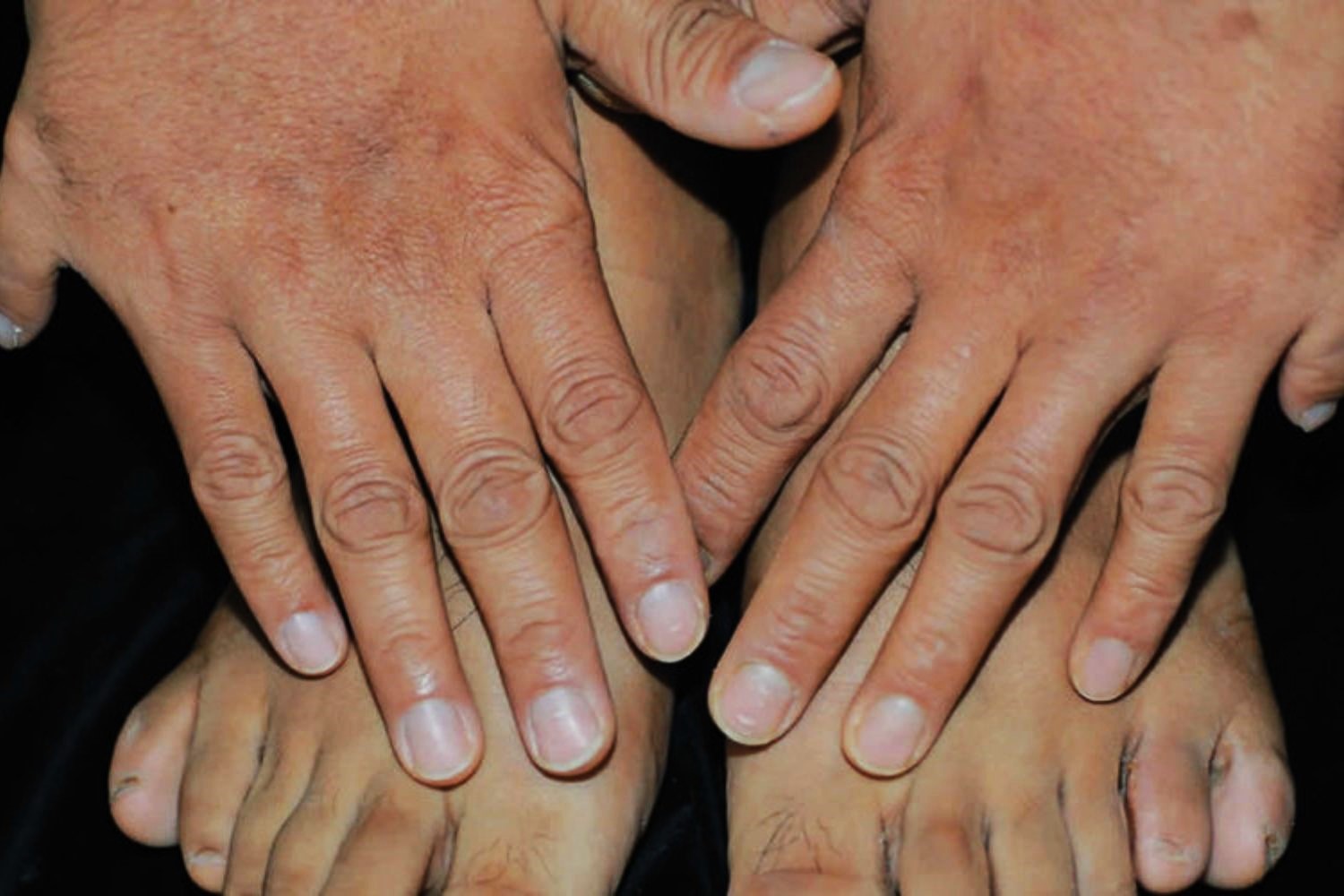
Müllerian derivatives, lymphangiectasia, and polydactyly might sound like complex medical terms, but they hold fascinating insights into human biology. Müllerian derivatives refer to structures that develop from the Müllerian ducts in embryos, playing a crucial role in reproductive anatomy. Lymphangiectasia is a condition where lymphatic vessels become dilated, leading to swelling and other complications. Polydactyly involves having extra fingers or toes, a trait that can be inherited or occur spontaneously. These topics intersect in surprising ways, revealing the intricate dance of genetics, development, and health. Ready to dive into 30 intriguing facts about these medical marvels? Let's get started!
Key Takeaways:
- Müllerian derivatives are embryonic structures that can cause rare conditions like PMDS. Lymphangiectasia can lead to symptoms like diarrhea and swelling, while polydactyly can result in extra fingers or toes.
- Genetic syndromes like Bardet-Biedl and Ellis-van Creveld can connect these conditions. Families with a history of these conditions may benefit from genetic counseling to understand the risks.
Understanding Müllerian Derivatives
Müllerian derivatives are remnants of the embryonic Müllerian ducts. These structures can sometimes persist into adulthood, leading to various medical conditions. Here are some fascinating facts about them:
- Müllerian ducts are embryonic structures that develop into female reproductive organs like the uterus, fallopian tubes, and part of the vagina.
- In males, Müllerian ducts typically regress due to the influence of anti-Müllerian hormone (AMH).
- Persistent Müllerian duct syndrome (PMDS) occurs when these ducts do not regress in males, leading to the presence of female reproductive structures.
- PMDS can result in undescended testes and the presence of a uterus in males.
- Diagnosis of PMDS often involves imaging techniques like ultrasound or MRI.
- Treatment for PMDS may include surgery to remove the Müllerian structures.
- PMDS is a rare condition, with fewer than 300 cases reported worldwide.
- Genetic mutations in the AMH gene or its receptor can cause PMDS.
Exploring Lymphangiectasia
Lymphangiectasia is a condition characterized by the dilation of lymphatic vessels. This can lead to various symptoms and complications. Let's dive into some key facts:
- Lymphangiectasia can be congenital (present at birth) or acquired later in life.
- It often affects the intestines, leading to protein-losing enteropathy.
- Symptoms include diarrhea, swelling, and abdominal pain.
- Diagnosis typically involves imaging studies and biopsy.
- Treatment may include dietary changes, medications, or surgery.
- Primary intestinal lymphangiectasia is a rare disorder, often diagnosed in childhood.
- Secondary lymphangiectasia can result from conditions like heart failure or lymphatic obstruction.
- A low-fat diet supplemented with medium-chain triglycerides can help manage symptoms.
- In severe cases, intravenous nutrition may be necessary.
Unraveling Polydactyly
Polydactyly is a condition where an individual has extra fingers or toes. This can occur in various forms and has interesting genetic implications. Here are some intriguing facts:
- Polydactyly can be preaxial (extra digit on the thumb side) or postaxial (extra digit on the pinky side).
- It is one of the most common congenital hand anomalies.
- Polydactyly can occur as an isolated condition or as part of a syndrome.
- Genetic mutations in several genes, including GLI3 and ZNF141, can cause polydactyly.
- The condition can be inherited in an autosomal dominant or recessive manner.
- Surgical removal of the extra digit is a common treatment.
- Polydactyly can affect one or both hands and/or feet.
- In some cultures, polydactyly is considered a sign of good luck.
- The prevalence of polydactyly varies among different populations.
- Polydactyly can sometimes be associated with other abnormalities, such as heart defects or cleft palate.
Connecting the Dots: Müllerian Derivatives, Lymphangiectasia, and Polydactyly
While Müllerian derivatives, lymphangiectasia, and polydactyly are distinct conditions, they can sometimes be interconnected through genetic syndromes. Here are some facts that highlight these connections:
- Bardet-Biedl syndrome is a genetic disorder that can include polydactyly, lymphangiectasia, and Müllerian anomalies.
- Ellis-van Creveld syndrome is another genetic condition that can present with polydactyly and Müllerian duct anomalies.
- Genetic counseling is often recommended for families with a history of these conditions to understand the risks and inheritance patterns.
Final Thoughts on Müllerian Derivatives Lymphangiectasia Polydactyly
Understanding Müllerian derivatives, lymphangiectasia, and polydactyly can seem complex, but breaking them down helps. Müllerian derivatives relate to embryonic structures in females, while lymphangiectasia involves the dilation of lymph vessels, often causing swelling. Polydactyly, the condition of having extra fingers or toes, is usually genetic.
These conditions, though rare, offer insights into human development and genetics. Knowing about them can aid in early diagnosis and treatment, improving quality of life for those affected. If you or someone you know shows symptoms, consulting a healthcare professional is crucial.
Remember, knowledge is power. By learning about these conditions, you’re better equipped to understand and support those who may be dealing with them. Stay curious and keep exploring the fascinating world of medical science.
Frequently Asked Questions
Was this page helpful?
Our commitment to delivering trustworthy and engaging content is at the heart of what we do. Each fact on our site is contributed by real users like you, bringing a wealth of diverse insights and information. To ensure the highest standards of accuracy and reliability, our dedicated editors meticulously review each submission. This process guarantees that the facts we share are not only fascinating but also credible. Trust in our commitment to quality and authenticity as you explore and learn with us.
